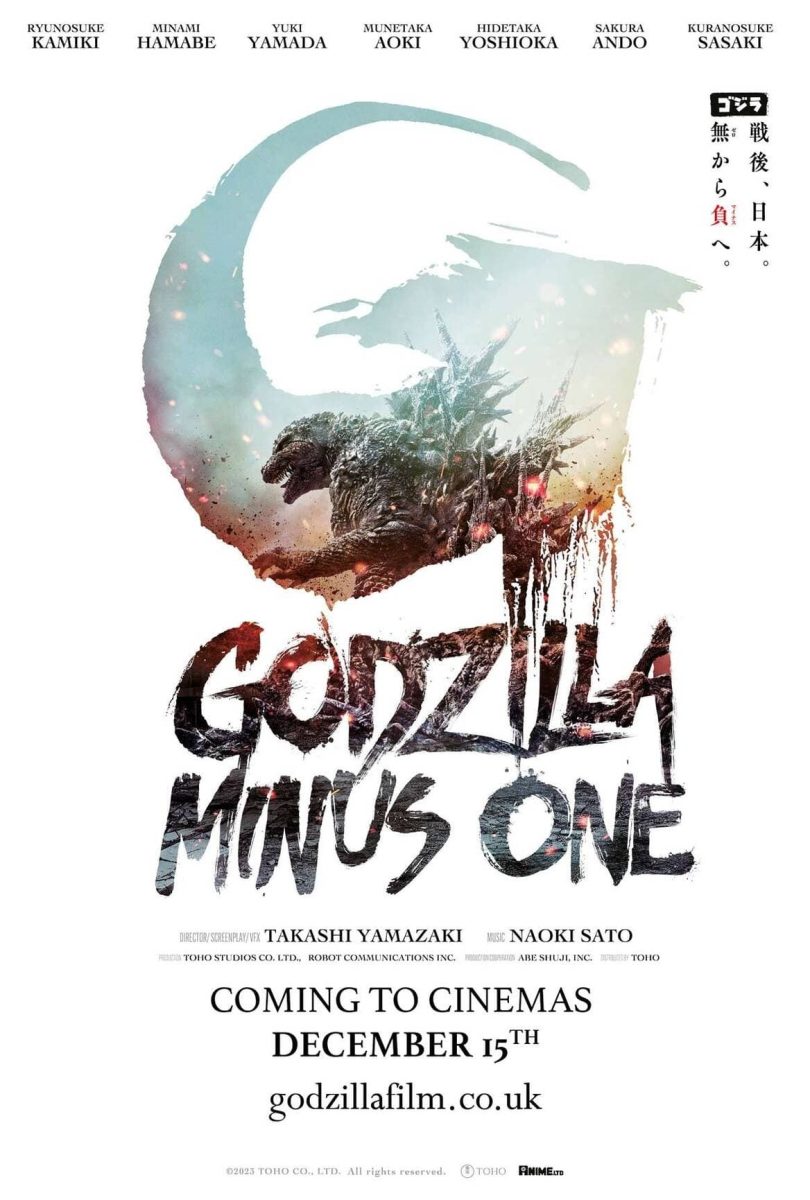I’m on a Godzilla kick. I’ve been watching the newer ones and I finished the 2014 film last week. I never got a chance to see “Godzilla Minus One” in the theater, so I resorted to watching it from a less-than-reliable website on my computer, but the monochrome version was nothing short of an experience. Visually, it was amazing to watch, the acting was great, and the characters were deeply developed with real, touching emotions.
Having seen the monochrome version before the original-colored version, I’ll say I was blown away by the effect the film gave. “Godzilla Minus One/Minus Color” very successfully interpreted the film as a 1950s black-and-white horror film rather than another modern-age destructive thriller, a unique nod to the original 1954 film by Ishirō Honda and provided a nostalgic, classic twist to an otherwise amazing movie.
The original films, while less-than-adapt, have their own little quirks; the cat-like form of Godzilla himself has changed literally dozens of times, practically with each of the thirty-eight films produced to date. I can’t say I love this version of him. He’s, to put it bluntly, quite silly-looking, with gawky proportions, massive legs and too-small a head. Then again, he is a giant lizard mutated by radiation; I suppose you can’t expect him to be beautiful.
The characters are deeply developed and played by talented actors, including Ryunosuke Kamiki, Minami Hamabe, Yuki Yamada, Munetaka Aoki, Hidetaka Yoshioka and Sakura Ando. Performances were deep, moving, dedicated and great. I felt for them, and it had an emotional ending. I’m still thinking about it, almost five days after I saw it, and to me, that’s how you know someone’s made a great film.
I appreciate the historical aspect as well. In the film, Japan has barely recovered from Allied bombings and the end of World War II when it is yet again faced with another threat. The main character, Kōichi Shikishima, is a failed kamikaze pilot, a type of suicide bomber, who was unable to complete his mission and later witnesses the massacre of a Japanese airplane maintenance facility on Odo Island due to his inability to shoot at the approaching Godzilla. This scene damages him greatly and troubles him throughout the film. During Godzilla’s rampage in Ginzo Shikishima’s roommate and love interest is presumed dead when Godzilla obliterates much of the district with his heat ray. He prepares to sacrifice himself by dive-bombing a plane laden with explosives into Godzilla’s mouth, leaving his adopted child behind and fulfilling his initial task as a suicide bomber. There are a few moments when the audience is led to believe he is, in fact, dead, and to me, this was the most emotional part of the film.
The biggest impact this film left on me is its clear observation of the societal impact of a ravaging lizard monster. The Godzilla franchise, and the Kaiju franchise entirely, has a trademark of violent, gruesome scenes depicting entire cities being leveled, and I think that’s part of why they’re so successful; people enjoy that content, it’s fun to watch, and everyone can appreciate a little light-hearted scene of mass death and destruction. But “Godzilla Minus One” truly manages to convey the human side of it, of the tragedy and somber stories that develop on the sidelines.

